This Is What Pimps Look Like in 2016

By:
The stereotype image of a pimp is a smooth-talking guy with a purple fur-trimmed hat and a cane. But that '70s-era image is divorced from the reality of sex work.
What we know about so-called pimps — people who make money by running prostitutes — is based on clichés from popular music and television. That's partly because conversations about prostitution and sex trafficking haven’t included those actually involved in the sex trade.
ALSO: The Subtle Hollywood Racism Nobody Talks About
To demystify the industry, the Urban Institute in 2014 released a detailed study called "Estimating the Size and Structure of the Underground Commercial Sex Economy in Eight Major U.S. Cities.” The report included interviews with more than 140 sex traffickers/pimps, child pornographers, and sex workers. It revealed the reality of the people we call pimps.
So who are these pimps, anyway?
Today’s pimps won’t admit they are pimps.
Most interviewees did not identify with the term pimp, scoffing at the cartoonish image of pimps in pop culture.
“I’m not a pimp. A pimp has the hat, the cane,” one 25-year-old respondent said.
Others found the term too restrictive, saying that their income isn't reliant solely on prostitution, which may be just one of several illegal activities in which they engage.
“A pimp’s primary existence is [pimping]; that’s how you live,” one respondent said. “I sold drugs or stole or robbed, whatever came up at the moment. Whatever it took to get money, that’s what I was about.”
A female interviewee identified as a madam described her job as both ethical and professional, unlike that of a pimp. She explained:
“Pimps are bitches. [Pimps] are not doing the advertising or doing anything. [Pimps] are using intimidation to get the girls to sell themselves and bring back the money. I provided the advertising, customers, safety, and security, and I didn’t take most of their money. They were making double to triple of what I was making per session.”
Pimps get a bad rap.
Respondents also objected to the association of the term “pimp” with violence: 85 percent said they did not control their employees with force. (We should be careful in taking their word for it, of course.)
“The media representation of pimps is an inaccurate representation," a 38-year-old respondent said. "They label us as animals, bullies, and predators.”
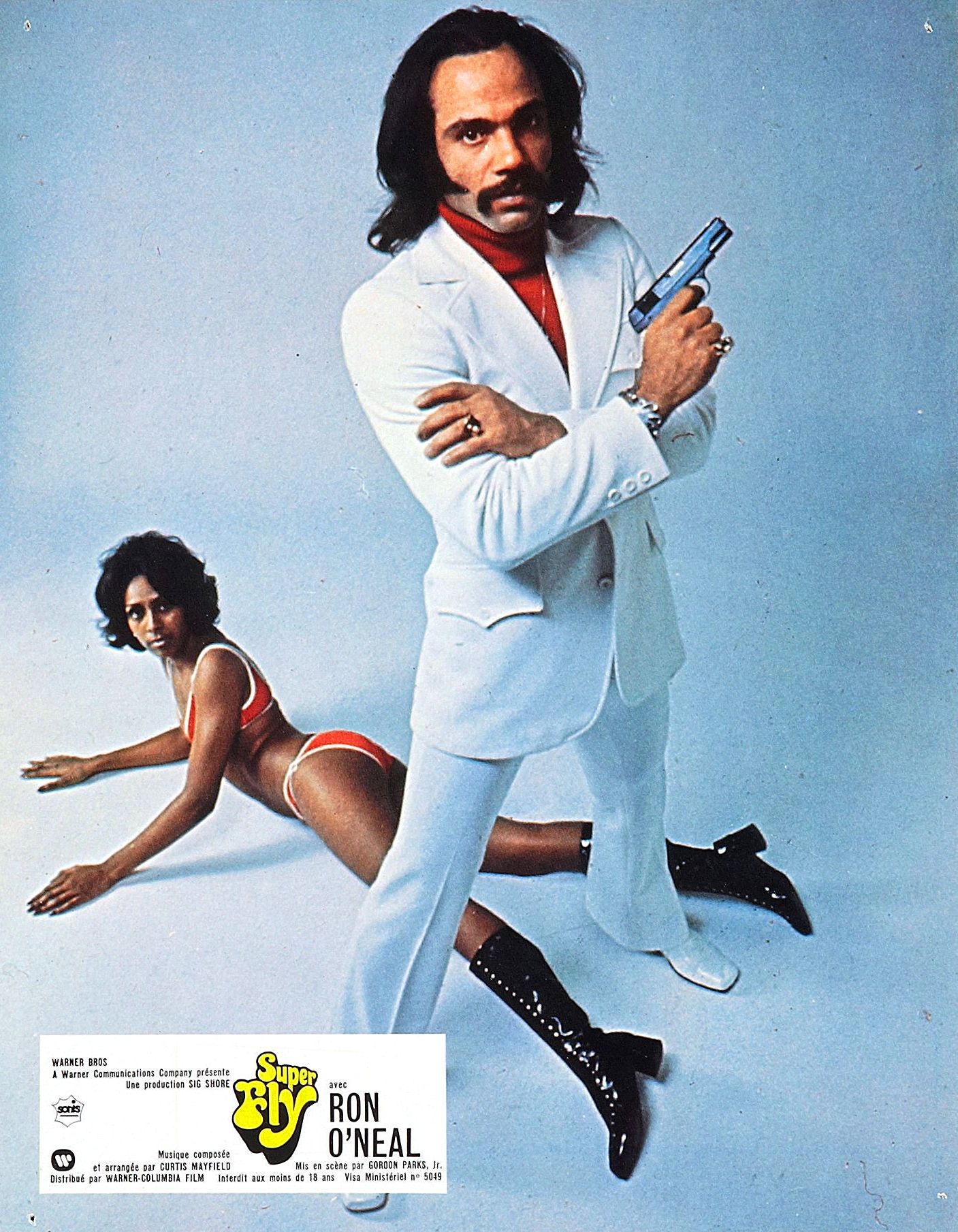 Wordpress/Will Mckinley - wordpress.com
Wordpress/Will Mckinley - wordpress.com
The respondents offered dubious reassurances that no woman is forced to become a prostitute, and many expressed concern for the women involved in more violent parts of the sex trade. “I think there is a difference from the international shit, holding bitches hostage, that’s not considered pimping to us,” a respondent said.
How do pimps get into the business?
Many pimps are introduced to the industry during childhood, they said. “The community I grew up in was full of prostitutes," a respondent said. "My mom was a prostitute. I had a sister who was an erotic dancer, and another was a prostitute out of three sisters.”
Other said they became involved in the sex trade after engaging in drug dealing: Dealers moved into pimping because it carried the prospect of a lower sentence if convicted and carried a lower requirement to remain in business (unlike drug dealers, they didn't have to “re-up” their stash). Others said that male mentors taught them how to work in the sex trade or that they were solicited by women.
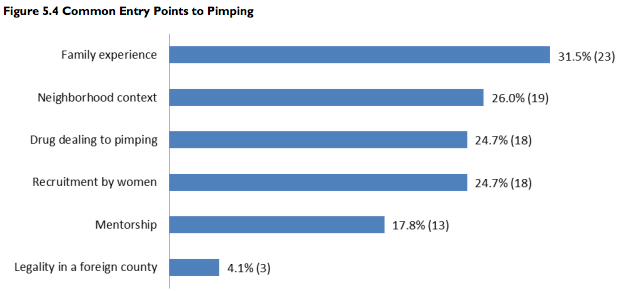 Urban Institute - urban.org
Urban Institute - urban.org
Pimps perceive themselves as business savvy.
Respondents said that pimping requires leadership skills, ambition, and powers of persuasion. Some said they borrowed tactics from sales and marketing literature.
One respondent described his aptitude: “[It was] eighth grade. Just being the dude that can talk a female into having sex with me and a couple of buddies. Always having the gift of the gab, always being able to talk to convince a female to see my point of view.”
Interviewees commonly considered themselves “business managers.” Some described their standards of conduct or the safety procedures they used to protect their employees. “I'd fire her for drugs, … just like they would do at a McDonalds," one said.
What pimps have to say about race in the sex industry.
About 85 percent of the pimps interviewed were male, and 66 percent were African-American. They said that racism is prevalent in the sex trade (like pretty much everywhere else). Several pimps said that white women were more valuable than non-white women, though they also invited greater attention from law enforcement.
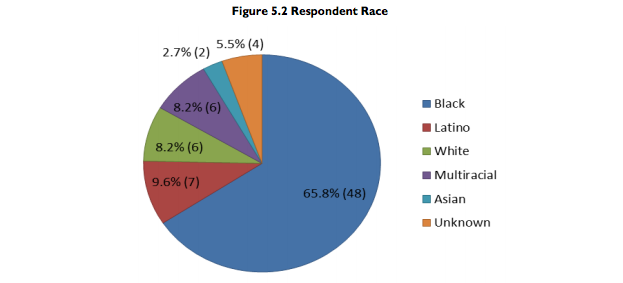 Urban Institute - urban.org
Urban Institute - urban.org
Some pimps forbid their employees to speak to Black men, whom they believed might try to rape them or try to pimp them out themselves.
Meet the Pimps of 2016
Despite these interviewees insistence that today’s sex workers are primarily voluntary free agents, the picture painted by recent arrest reports is decidedly more troubling.
It would seem that brothels are alive and well in Southern California. On Friday, 44-year-old Gin Woo Park was sentenced to five felony counts of pimping in Irvine brothels after pleading guilty.
His co-defendants in the case, Miyoun Kim, 38, and Heung Soon Kim, 57, have both entered non-guilty pleas and are free on $250,000 bail and $750,000 bail respectively, according to a Los Angeles Times report.
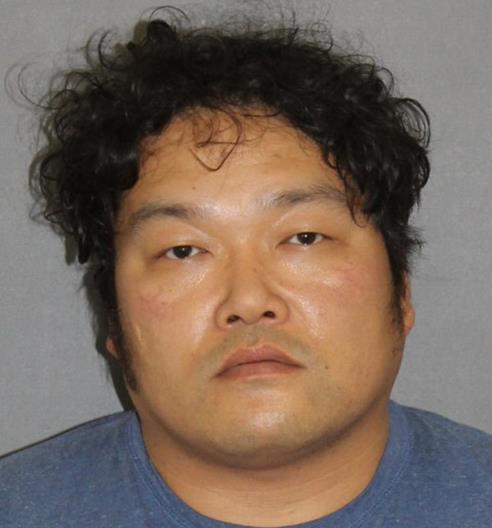 The Irvine Police Department/OC Register - ocregister.com
The Irvine Police Department/OC Register - ocregister.com
Law enforcement alleges that the trio ran a brothel out of an Irvine apartment leased in December 2013, which was busted by undercover officers less than a year later.
In New York, a Bronx apartment bust the same week culminated in the arrest of Maurice Hines, 38, and Shurine Byron, 29, (pictured below) who were charged with sex trafficking and promoting prostitution, reports the New York Daily News. Shurine Byron/New York Daily News - nydailynews.com
Shurine Byron/New York Daily News - nydailynews.com
Hines was also charged with rape, and a 14-year-old girl found in the sex den during the Thursday raid told detectives that she was held captive and pimped out for more than two months, police sources told the Daily News Friday.
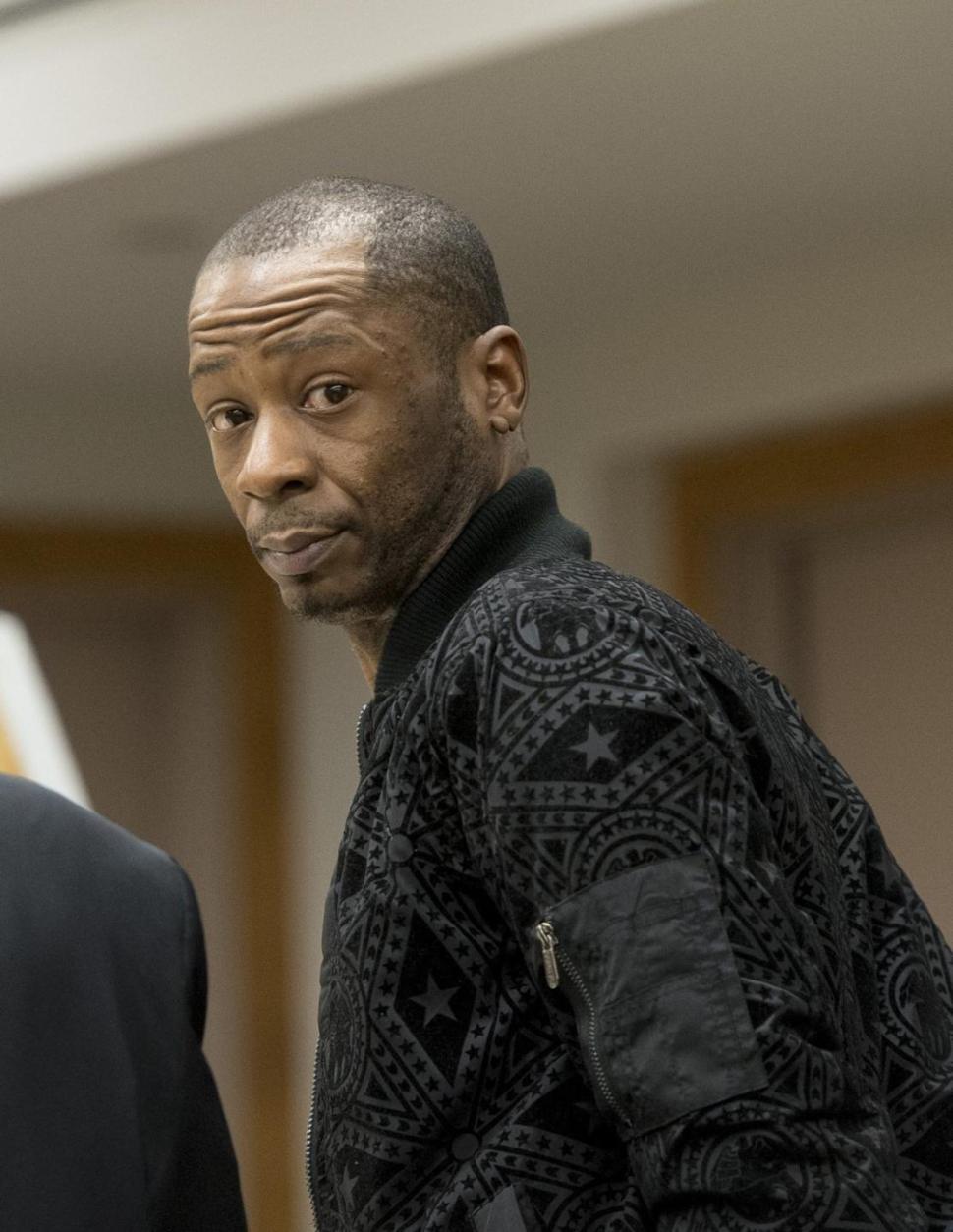 Zerocensorship.com - zerocensorship.com
Zerocensorship.com - zerocensorship.com
The teen, a runaway, told cops that she was forced into prostitution and threatened with death if she tried to escape.
What is the future of the pimp?
It's difficult to predict the shifts in illegal markets and the forces that push people into prostitution. It's also unclear how many pimps there really are.
One respondent said that he is already thinking of hanging up his hat and cane because most of today’s sex workers are renegades or self-employed sex workers. (Is that actually true? One Dallas law enforcement official is quoted as saying that he has yet to come across a so-called renegade.)
Advocacy groups such as The Sex Workers Project, SWOP and SWAN aim to provide resources for sex workers to learn about their rights, health care options, and legal aid without fear of prosecution.
